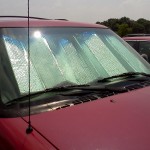Staying Safe in the Heat Wave
The miserably hot weather that’s been gripping the Midwest is beginning to take hold of Pennsylvania. With every heat wave, Dr. Richard O’Brien treats multiple cases of heat related illness. He says nobody is immune to the temperatures. “Often they are sporting people, and sometimes they are little old ladies going to church,” says O’Brien, spokesman for the Pennsylvania Chapter of the American College of Emergency Physicians and associate professor of emergency medicine at The Commonwealth Medical College.
The three basic levels of heat illness include: heat cramps, heat exhaustion and heat stroke. “Heat exhaustion is a little more serious, we often use IV fluids for that; you might need a visit to the hospital for that. Heat stroke is very serious and life threatening. Think of heat stroke as being as serious as a real stroke,” O’Brien cautions.
The symptoms of heat exhaustion can include weakness, dizziness and shortness of breath. “You need to seek care. You need to lie down, you need to be cooled off, you need to be hydrated,” O’Brien tells us. He says the key is to keep heat exhaustion from becoming heat stroke.
Dr. O’Brien urges everyone to limit activities and to keep well-hydrated in this weather: “The reason why we hydrate is so that we can sweat, so that we don’t overheat, so that we don’t get sick.” He points out that children and the elderly are especially vulnerable to heat illness.
With children’s safety in mind, AAA is urging us never to leave kids alone in car. Once a car is locked up, temperatures inside can climb by 20-degrees in the first 10-minutes. “The inside of a car, on a day like this – with temperatures in the 90s – can reach 200 degrees,” says AAA Mid-Atlantic spokesperson Jim Lardear. “You can cook food… at that temperature,” Lardear warns.
The National Highway Traffic Safety Administration reports at least 27-documented child deaths, per year, which are linked to hot vehicles. Both O’Brien and Lardear say these safety rules for hydration and car safety apply to our pets too.



